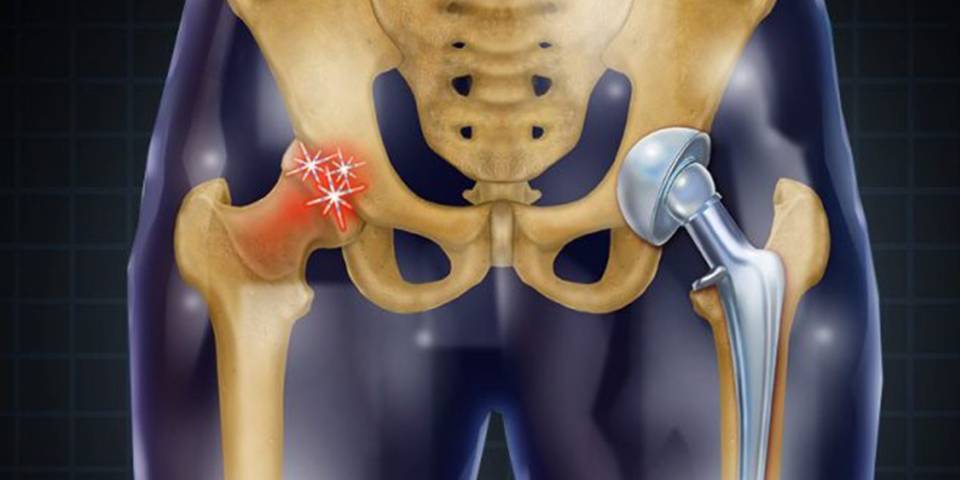
- 21/08/2024
- Dr. Ashwini Gaurav
- 0 Comments
- Blog
Is Hip Reconstruction and Hip Replacement the Same?
Dr. Ashwini Gaurav at his orthopedic clinic answered these questions with examples and identified that this is a common question that causes patients to be confused. So he takes the initiative for that. In this article, Dr Ashwini Gaurav explains the both procedure of Hip Replacement and Hip Reconstruction.
Hip reconstruction and hip replacement are two different procedures for managing hip pain and each procedure has its own advantages and disadvantages. Hip reconstruction focuses on improving and supporting the natural hip joint to ease pain and regenerate function, making it ideal for those with less austere damage. Again, hip replacement involves replacing the broken joint with an artificial one, which is constantly necessary for extensive damage or degeneration. Let’s See One by One
Hip Reconstruction Surgery:
Hip reconstruction surgery focuses on repairing and maintaining the natural hip joint rather than replacing it entirely. Think of it as a targeted fix leveled at restoring function and easing pain while keeping as much of your original joint as possible. This type of surgery is frequently recommended for younger or more active patients whose hip damage is not extended enough to need a full replacement.
There are various types of hip reconstruction procedures, each tailored to specific issues within the joint:
- Hip Resurfacing: Rather than replacing the entire hip connection, only the damaged surfaces of the hip are limited to metal implants.This is frequently a good option for active individualities with arthritis who want to save more of their natural bone.
- Osteotomy: If the hip joint is distorted or there’s bone damage, the surgeon might reshape the bone or relocate it to soothe pressure on the joint. This method is frequently utilized in younger cases to delay the need for a total hip replacement.
- Cartilage Repair or Transplantation: If cartilage damage is the primary issue, a surgeon may try to restore or replace it with grafts or special materials to regenerate cushioning in the joint.
The main goal of hip reconstruction is to ease pain, better mobility, and extend the duration of the natural hip connection, delaying the need for more invasive surgeries like hip replacement.
Hip Replacement Surgery:
Hip replacement surgery, also known as hip arthroplasty, is a common procedure aimed at relieving pain and restoring the function of a broken hip joint. Whether due to arthritis, injury, or other conditions, when conservative treatments no longer give relief, hip relief might be the recommended solution.
Hip replacement can be performed utilizing varied surgical ways, each with its own advantages and considerations:
- Posterior Approach: This is the most generally utilized method. A tear is made on the outside of the hip, close to the buttocks. The surgeon cuts through some muscles to enter the hip joining while you lie on your side.
- Direct Anterior Approach: In this approach, you lie on your back, and the surgeon makes a gash on the front of your thigh. This method avoids cutting through major muscles, potentially leading to a quickly reclamation and minor muscle damage.
- Lateral Approach: Similar to the posterior way but with a tear made on the external side of the hip, near to the front of the body. This approach can be salutary for accessing certain region of the hip joint and may give advantages in terms of reclamation.
Signs You May Need Hip Surgery:
If you’re struggling with hip pain or mobility effects, it’s important to recognize the signals that might indicate the need for surgery. Here are some key conditions and symptoms to consider:
- Arthritis (Osteoarthritis or Rheumatoid Arthritis)
- Age-Related Weakness (Bone density decreases with age)
- Fractures (Due to trauma or osteoporosis)
- Labral Tear
- Hip Dysplasia (Shallow acetabulum causing instability)
In addition to these specific conditions, other signs that may suggest the need for hip surgery include:
- Chronic Pain
- Restricted Movement
- Joint Instability
- Quality of Life Impact
- Treatment Resistance
- Severe Joint Damage
- Activity-Related Pain
Conclusion:
Deciding between hip reconstruction and hip replacement is a crucial step towards reclaiming your mobility and quality of life. Whether you’re looking to preserve your natural joint or seeking a comprehensive solution for severe damage, understanding your options is key. Dr. Ashwini Gaurav, a renowned orthopedic surgeon in Patna, offers expert guidance to support you to make the best choice for your special requirements. Do not let hip pain hold you back any longer — take the first step towards relief and reclamation today. Book an appointment with Dr. Ashwini Gaurav to discuss your condition and explore the best surgical options for you. Your path to a more active and pain-free life begins now!

